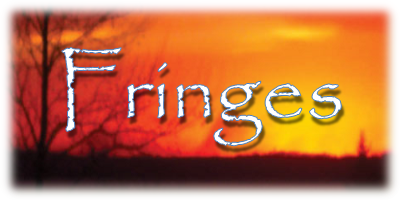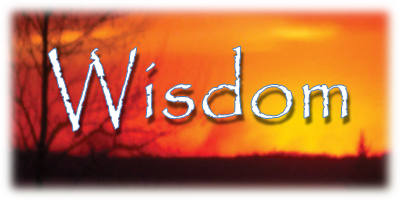One of the most beautiful aspects of the Hebrew language is its clear connection between a word and its illustrative meaning. The Hebrew word ציצת tsiytsiyt [H:6734] is a good example of this relationship.
38 Speak unto the children of Israel, and bid them that they make them fringes (tsiytsiyt) in the borders of their garments throughout their generations, and that they put upon the fringe (tsiytsiyt) of the borders a ribband of blue: 39 And it shall be unto you for a fringe (tsiytsiyt), that ye may look upon it, and remember all the commandments of the LORD, and do them; and that ye seek not after your own heart and your own eyes, after which ye use to go a whoring: 40 That ye may remember, and do all my commandments, and be holy unto your God. Numbers 15:38-40 (KJV)
From the above passage we learn the ציצת tsiytsiyt [H:6734], translated as "fringe," are worn on the four corners of the garments. The standard dress of the Hebrews was a rectangular piece of cloth with a hole in the center for the head and was worn similar to a modern poncho. A sash was then tied around the waist to secure the garment. The fringes were then tied to each corner, border in the KJV translation, of this garment as reminders of God's commands for his people.
The image above is an example of a tsiytsiyt used today on the Tallit, four-cornered garment with the tsiytsiyt tied to each corner. This garment is worn today by Orthodox Jews in order to observe the command of Numbers chapter 15.
The word tsiytsiyt is derived from the noun ציץ tsiyts [H:6731] and the verb צוץ tsuts [H:6692], both of which can be found in the following passage.
And it came to pass, that on the morrow Moses went into the tabernacle of witness; and, behold, the rod of Aaron for the house of Levi was budded, and brought forth buds, and bloomed (tsuts) blossoms (tsiyts), and yielded almonds. Numbers 17:8 (KJV)
When I first began studying the word tsiytsiyt, I pondered the connection between tsiytsiyt, meaning fringe, and tsiyts, meaning blossom, and wondered if the fringe originally looked like a blossom. I then reminded myself I was concentrating on the physical appearance of these objects, a Greek way of thinking, and had forgotten the Hebrews were concerned with function. When I realized the function of a blossom was to produce fruit on a tree, I was amazed to discover this was the exact same function of the tsiytsiyt, to produce fruit within the man.
But his delight is in the teachings of Yahweh and in his teachings he meditates day and night, and he will be like a tree planted by streams of water which gives his fruit in its season Psalm 1:2,3
The function of the fringe, according to Numbers 15:38-40, is to remember the commandments, the teachings of God, which according to Psalm 1:2,3, is like producing fruit.
According to the book of Matthew, Yeshua also wore these fringes.
And, behold, a woman, which was diseased with an issue of blood twelve years, came behind him, and touched the hem of his garment. For she said within herself, If I may but touch his garment, I shall be whole. Matthew 9:20 (KJV)
The Septuagint uses the Greek word kraspedon [G:2899] for the Hebrew word ציצת tsiytsiyt [H:6734] in Numbers 15:38. In the passage from Matthew above, the Greek word for "hem" is the same word, kraspedon, and literally means "fringe." The final evidence showing that Yeshua did in fact wear tsiytsiyt is found in the Shem Tov Hebrew text where we find the Hebrew word tsiytsiyt in Matthew 9:20.
The woman knew if she just touched his fringe she would be healed. Why? Because she knew of the prophecy in Malachi 4:2:
But unto you that fear my name shall the Sun of righteousness arise with healing in his wings (KJV)
The Hebrew word meaning "wing" is כנף kanaph [H:3671] but it is also the word for a "corner," as in the corners of a garment. The woman grabbed hold of his tsiytsiyt, which were tied to the "corners" of his garment because she knew that he had healing in his "corners."
Another word in the Malachi verse I would like to address is, the word "sun." Is this a reference to the worshipping of the sun god? I don't think so. The Hebrew word for the sun is שמש shemesh [H:8121] and is closely related to the Aramaic word שמש shamash (While this word is not found in the Hebrew Bible or the Aramaic portions of it, its verbal root is used in Daniel 7:20 where it means "to serve") meaning "servant." Notice these two words are spelled identically. Only the vowel sounds are different. Could the author of the Malachi passage have intended the meaning "servant of righteousness" rather than "sun of righteousness"?
Like what you’re discovering? Continue the journey from Bible reader to translator.
|






